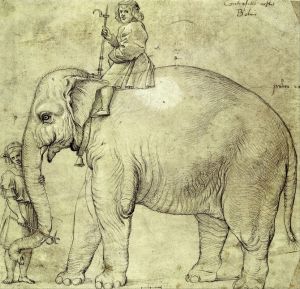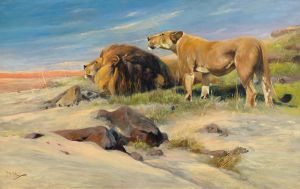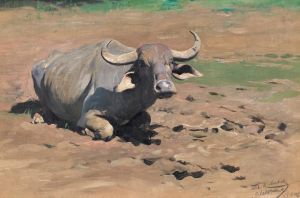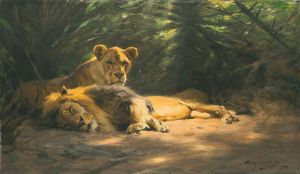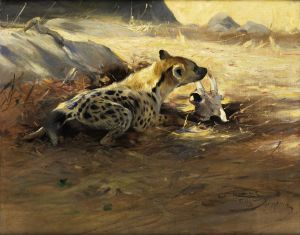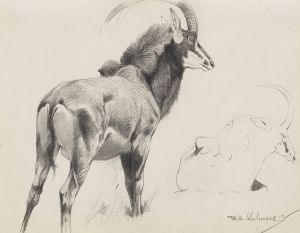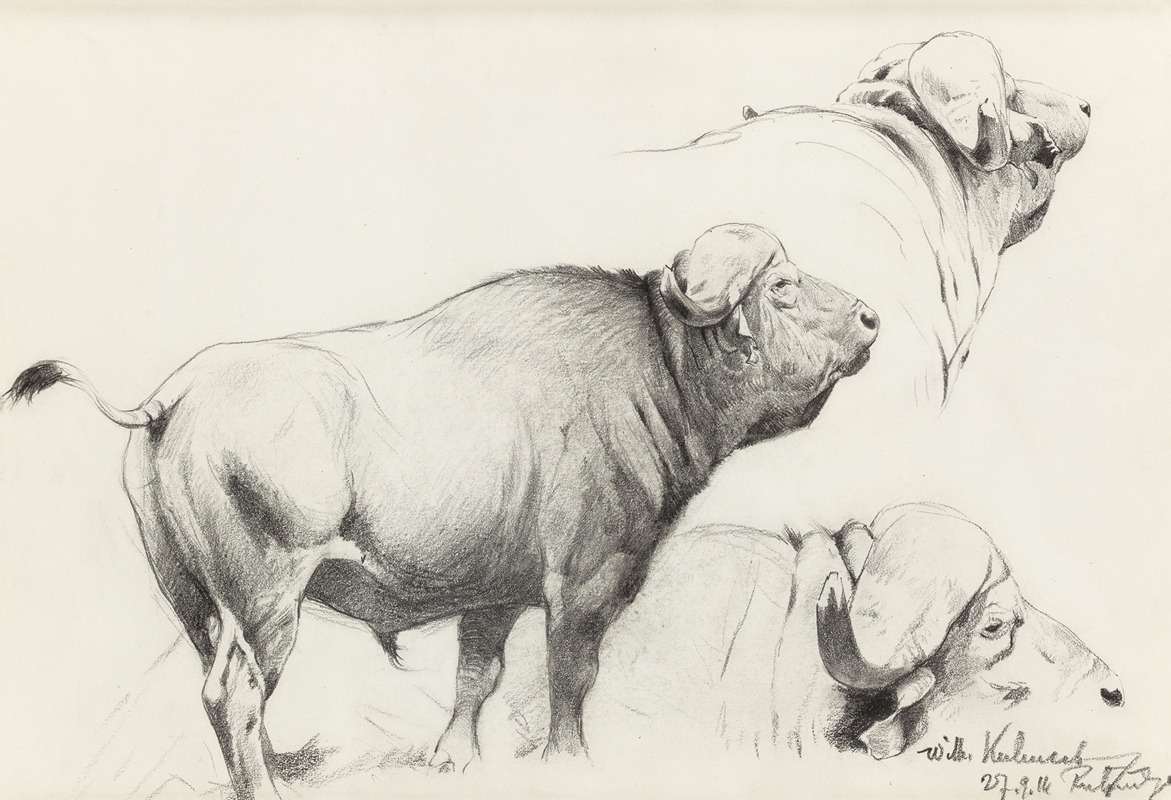
Cape Buffalo
A hand-painted replica of Wilhelm Kuhnert’s masterpiece Cape Buffalo, meticulously crafted by professional artists to capture the true essence of the original. Each piece is created with museum-quality canvas and rare mineral pigments, carefully painted by experienced artists with delicate brushstrokes and rich, layered colors to perfectly recreate the texture of the original artwork. Unlike machine-printed reproductions, this hand-painted version brings the painting to life, infused with the artist’s emotions and skill in every stroke. Whether for personal collection or home decoration, it instantly elevates the artistic atmosphere of any space.
Wilhelm Kuhnert was a renowned German painter, illustrator, and author, celebrated for his detailed and realistic depictions of wildlife. Born on September 28, 1865, in Oppeln, Germany (now Opole, Poland), Kuhnert developed a passion for the natural world early in his life. He studied at the Royal Academy of Arts in Berlin, where he honed his skills in painting and illustration. Kuhnert's work is characterized by his meticulous attention to detail and his ability to capture the essence of the animals he portrayed.
One of Kuhnert's notable works is "Cape Buffalo," a painting that exemplifies his expertise in wildlife art. The Cape buffalo, also known as the African buffalo, is a large African bovine known for its strength and unpredictable nature. Kuhnert's depiction of this animal showcases his ability to render the buffalo with lifelike precision, capturing both its physical form and the spirit of its natural environment.
Kuhnert's approach to painting wildlife was unique for his time. He often traveled to Africa to observe animals in their natural habitats, a practice that was not common among artists of his era. These expeditions allowed him to study the animals closely, understand their behaviors, and accurately portray them in his art. His travels to Africa provided him with firsthand experiences that enriched his work, allowing him to create paintings that were not only artistically impressive but also scientifically accurate.
The "Cape Buffalo" painting, like many of Kuhnert's works, reflects his dedication to realism and his deep respect for the natural world. His ability to capture the texture of the buffalo's hide, the intensity of its gaze, and the ruggedness of its surroundings demonstrates his skill as a painter and his commitment to authenticity. Kuhnert's work was not merely about creating beautiful images; it was about conveying the majesty and complexity of wildlife.
Kuhnert's paintings were highly regarded during his lifetime and continue to be appreciated for their artistic and historical value. His work contributed to the popularization of wildlife art and inspired future generations of artists to explore the natural world through their art. Kuhnert's legacy is evident in the continued interest in wildlife art and the appreciation for the intricate beauty of the animal kingdom.
In addition to his paintings, Kuhnert also illustrated numerous books and publications, further cementing his reputation as a leading figure in wildlife art. His illustrations were featured in works that aimed to educate the public about the diversity and wonder of the animal world.
Wilhelm Kuhnert passed away on February 11, 1926, in Flims Waldhaus, Switzerland, but his influence on the art world endures. His dedication to capturing the essence of wildlife and his pioneering approach to observing animals in their natural habitats have left a lasting impact on the field of wildlife art. "Cape Buffalo" remains a testament to Kuhnert's skill and his passion for the natural world, embodying the spirit of an artist who sought to bring the beauty of wildlife to the forefront of artistic expression.





